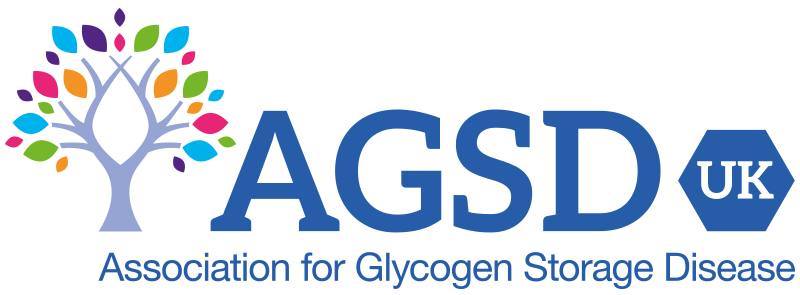There are two sub-types of GSD1, we explain the difference between 1a and 1b. Much of the symptoms and management are the same for both.
Symptoms
Typically the first signs of illness in GSD1 can be when the child is 3 to 6 months old.
Children with this condition will present with low blood sugar (hypoglycaemia) early in life. The symptoms of this include sweating, irritability, constant hunger, poor growth and possibly loss of consciousness. If the blood sugar has dropped low enough, the child may also have a seizure or fit. The liver will have become larger than normal, due to the extra glycogen that cannot be used being continually stored. Long term problems can include impaired growth, a delay of puberty, and bones can become weak.
Children with GSD1b will additionally have a weakened immune system and inflammatory bowel disease.
It is often seen that as children with GSD1 get older their symptoms become easier to manage. This is because we need less energy when we are older, as we grow at a reduced rate.
Treatment to avoid hypoglycaemia
The main treatment is to avoid hypoglycaemia (low blood sugar). Children with GSD1 rely entirely on frequent feeds so that glucose is delivered directly from the gut into the bloodstream, rather than from the liver. They cannot go without food for more than a few hours, and are always at risk of low blood sugar. To prevent this they require regular feeds and meals throughout the day, and overnight feeds.
After the child is over one year old a slow release carbohydrate may be used such as uncooked cornflour, this is divided into a few doses during the day, to try and maintain a steady blood glucose level.
To ensure the child receives a constant supply of energy, tube feeding is usually required overnight. To start with, a nasogastric tube (a feeding tube from their nose to their tummy) will be used and feeding established. Our bodies still need energy while we’re asleep and it is easier to use a tube than to be woken up every few hours during the night to have something to eat. Eventually, a gastrostomy (a tube surgically implanted into the tummy) may be required.
With either of these tubes, the child is able to also eat and drink normally. They are placed to enable the child to have a regular energy supply, and are both reversible so that if the child’s fasting tolerance (length of time they can go between feeds) increases, they can be removed.
A specialist metabolic dietician will give parents a regular feeding plan that must be followed. Any problems or difficulties with this regimen will be discussed with the dietitian.
The child’s growth will be monitored at the clinic visit. Slow growth does not usually need any treatment, as they catch up as they get older.
Additional treatment in GSD1b
In GSD1b, in addition to some other regular medicines, children may require regular injections of G-CSF (recombinant human granulocyte-colony stimulating factor), which will help boost their immunity to prevent infections.
